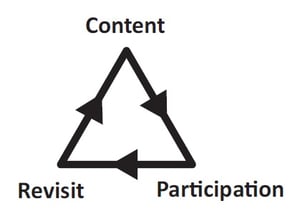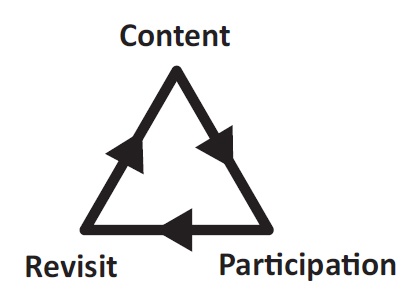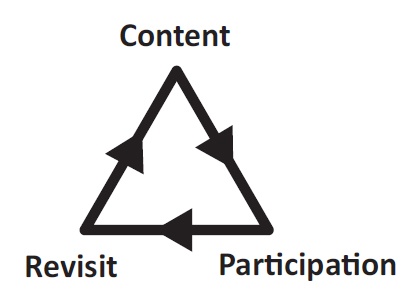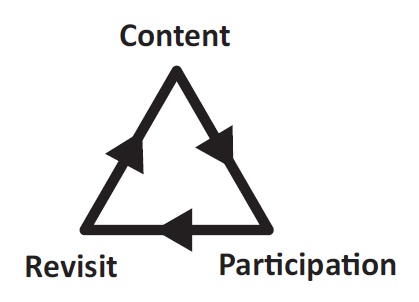


One of the core concepts of building an Instructor-Led, Participant-Centered Workshop is CPR. I’ll give a brief explanation of it below and then show what it looks like in practice. This is a great place to start if you want to resuscitate your training.

Start your training design by keeping your focus on the learner. The CPR in ILPC training is Content, Participation, and Revisit.
Content = The information that needs to be transferred from you, the trainer, to the learner.
Participation = Needs to occur every ten minutes. This can be as simple as discussing the content with a partner or using games and activities to reinforce the content.
Revisit = Allow time for learners to revisit what they learned in their own words.
The brain doing the talking is the brain doing the learning.
According to Buzan, “if content review took place at prescribed intervals, retention stayed consistently high, around eighty-five percent and higher. But if review didn’t take place, as much as eighty percent of the detailed information would be lost within twenty-four hours!”
Revisiting information is as simple having participants write down their favorite concept they learned. Next, have participants discuss their favorite concept with one other person. Participants then share their information with the broader group and add any new ideas they learn to their own information.
Help People Learn Twice as Much in Half the Time
The Bob Pike Group has helped 95% of Fortune 100 companies with measurable training and performance solutions. There are several workshop options to choose from:
Learn how to write effective training objectives with this “Free Guide: 5 Tips for Writing Effective Objectives.”
Don't miss out on updates and chances
to sharpen your skills with participant-centered learning.




3740 N Chestnut St #113 - Chaska, MN 55318-3053